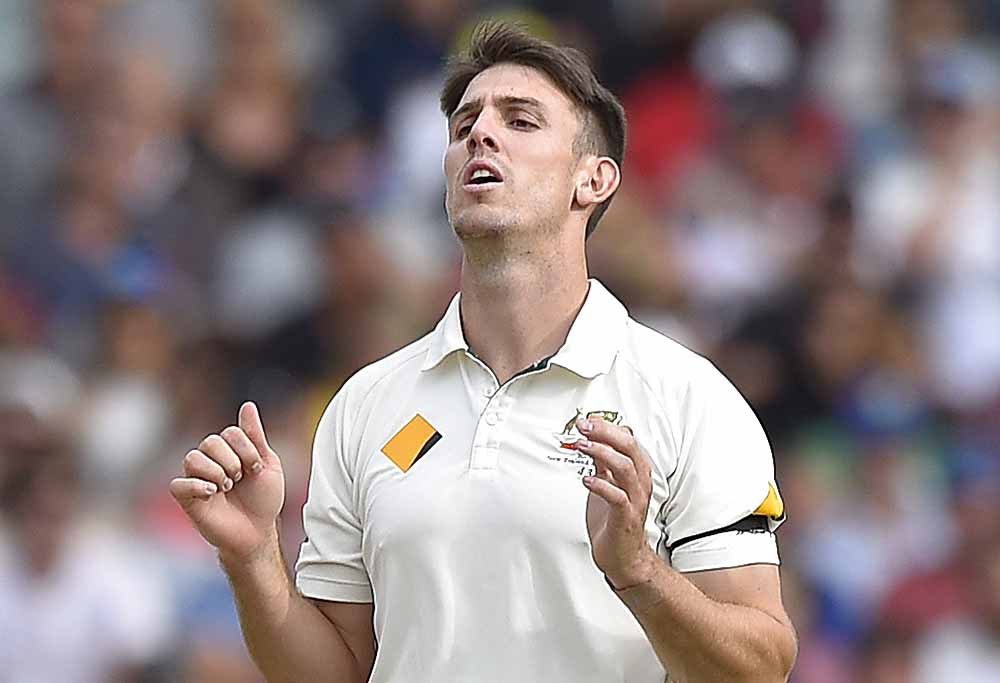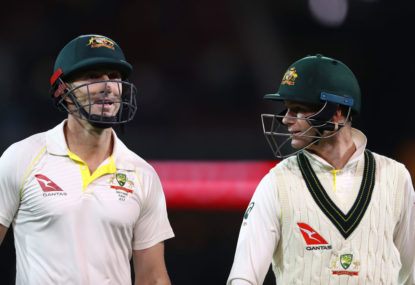When South Africa steamrolled Australia in the fourth Test yesterday, it became the first series since 2009-10 that an Australia batsman has failed to make a century.
In that summer however, against the West Indies, Australia won the three-Test series 2-nil, as the team scored in excess of 430 three times.
Prior to that, the last time Australia failed to have a century-maker in a four-Test series was coincidentally in South Africa, in 1969-70, when the tourists were hammered 4-nil.
In this current series, Proteas batsmen scored five centuries and compiled nine of the ten highest scores across the four Tests.
With Steve Smith and David Warner sidelined for 12 months, the batting stocks look bare.
Over the past five years, Australian batsmen have scored 71 Test centuries with Smith (22) and Warner (19) accounting for 41. Filling the void is going to be a difficult task, especially given the parlous performance in the Republic.
While they were there, Smith (142 runs at 23.7) and Warner (217 runs at 36.2) both had lean series. Cam Bancroft led the aggregate tally, with 223 at 37.2. He will be unavailable for selection until the New Year.
Tim Paine (215 runs at 43.0) was the only batsman to average north of 40. The fact that he was made captain is no doubt two-fold.
The selectors certainly respect his leadership abilities, but he is also perhaps the only guaranteed selection in the current top-seven in the medium term.
Traditionally, wicketkeepers have been chosen as vice-captains with the likes of Rod Marsh, Ian Healy and Adam Gilchrist all filling that role admirably in recent decades.
Given the ‘keeper is charged with traditionally being the team’s ‘voice’ with respect to setting the tone and keeping things upbeat, as well as constantly the man looked upon to set the angles in the field, adding the full onus of captaincy on top of that will be a heavy burden.
Hopefully, it will not dilute his performances with the gloves and willow.

Wicketkeeper Tim Paine (AAP Image/Dave Hunt)
After outstanding Ashes series, Marsh brothers Shaun (147 at 18.4) and Mitch (176 at 22.0) regressed to the ‘bad old days’.
For Shaun, it was sadly a return to a familiar pattern, one where consistency escaped him. While it was hoped his Ashes showing would herald a new era of consistent performance, this series has allayed that hope.
Once again, he was regularly dismissed by balls well wide of off-stump that he parried at with minimal footwork, only to nick to the ‘keeper and slips cordon.
Through 32 Tests he averages 37.6. His inconsistency is best highlighted by his six centuries and nine ducks.
Turning 35 in July, it is difficult seeing him all of a sudden becoming a reliable rock in the middle order.
Brother Mitch is also at the crossroads once again. He has played 28 Tests for an average of 27.8 and, given the frailties of those above him, that sort of output is a concern.
Through the four Tests, where Australia chased considerable leather, he sent down just 42 overs – 5.7 per cent of the total the side bowled – for four wickets at 42.2.

AAP Image/David Mariuz
Usman Khawaja again failed to flatter, finishing with 165 runs at 20.6, despite innings of 75 and 53.
It was yet another case of floundering away from home, where he now averages 25.2 against an average of 59.4 on Aussie soil. Having said that, his home Ashes series over the summer was saved by his 171 in the final Test at the SCG, providing more than half his five-Test output.
Peter Handscomb sat on the sidelines as the reserve batsman for the first three Tests before the tour imploded on the back of the ball-tampering scandal at Cape Town.
He was out first ball to Vernon Philander in the first innings, with a late attempt to leave producing an inside edge back onto the stumps. He dragged Philander on again in the second innings while again trying to leave a ball wide of off-stump, falling for 24.
It was a tough call on the replacement openers – Matt Renshaw and Joe Burns – arriving in Johannesburg less than 48 hours before the final Test.
Burns made four and looked sound for his 42 in the second innings. Renshaw made scores of eight and five, leaving him with a return of 150 runs at 13.7 from his past 11 Test innings.
Renshaw led the runs aggregate in the recently completed Sheffield Shield season with 804 runs at 44.6. That is the lowest total to top the aggregate since 1982-83.
And therein lies the extended issue for Australia’s selectors.
Long gone are the days where the likes of Matthew Hayden, Justin Langer, Damien Martyn, Darren Lehmann, Stuart Law, Martin Love et al kept churning out big runs season after season.
Yesterday in TV commentary, Shane Warne floated Marcus Stoinis as a potential saviour in the middle order. He is a classic example of picking a player for Test level in hope rather than expectation.
This Shield season he played six matches, batted 11 times and averaged 17.3. At the age of 28, he has a first-class average of 32.8.
And yet he is seen as one of the answers in the middle order.
The issue facing the selection panel is the dearth of quality batsmen outside the current squad. Few are putting legitimate pressure on those who are underperforming in the current Test team.
And that all adds up to an extremely worrying time ahead.































































































